“I would try to ask [Doris Wishman] questions about cinema history, like who was her favorite director. ‘Do you like Citizen Kane?’ I was just trying to figure out where she was coming from and what her background was. She had no interest at all in the history of cinema. It was just all her own creativity. She did not see herself as being part of history.”
—Bill Orcutt from “When I Die I’ll Make Films in Hell: Doris Wishman in Miami”
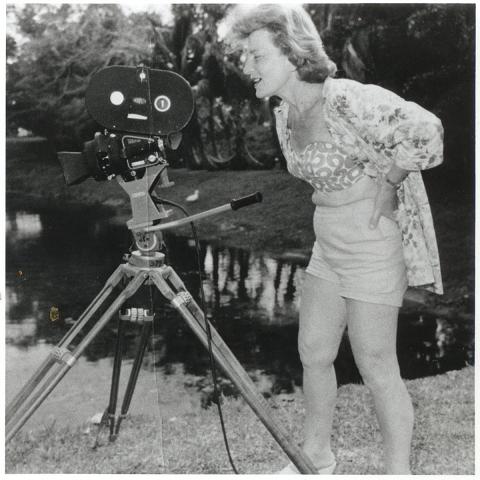
Despite the inherent caginess Doris Wishman displays in the above quote — and she was irritatingly obtuse when discussing her own work — her films are anything but circumspect. And due to the natural opportunism of the genres she worked in (“nudies,” “roughies,” etc.), there is a common misconception that she approached filmmaking from a commercial aspect, not a creative one. Which is hardly the case.
In fact, Wishman viewed herself as a legitimate filmmaker, no different from the Scorseses and the Friedkins of the world, and her body of work — dozens of what many would refer to as campy sex films — were the total expression of her artistic voice. Whether or not one wants to take the dive and call her filmography art (I’ll happily go there with you), she believed herself to be an artist. Hence, what you may not have gotten from an interview, you get right there in her movies: her interests and small “p” politics, her defiance and rebelliousness toward state censorship and general American sexual repression. She was weird and groundbreaking and singular. Somehow, and quite improbably, she inhabited a renegade female spirit inside an industry that made money selling misogyny.
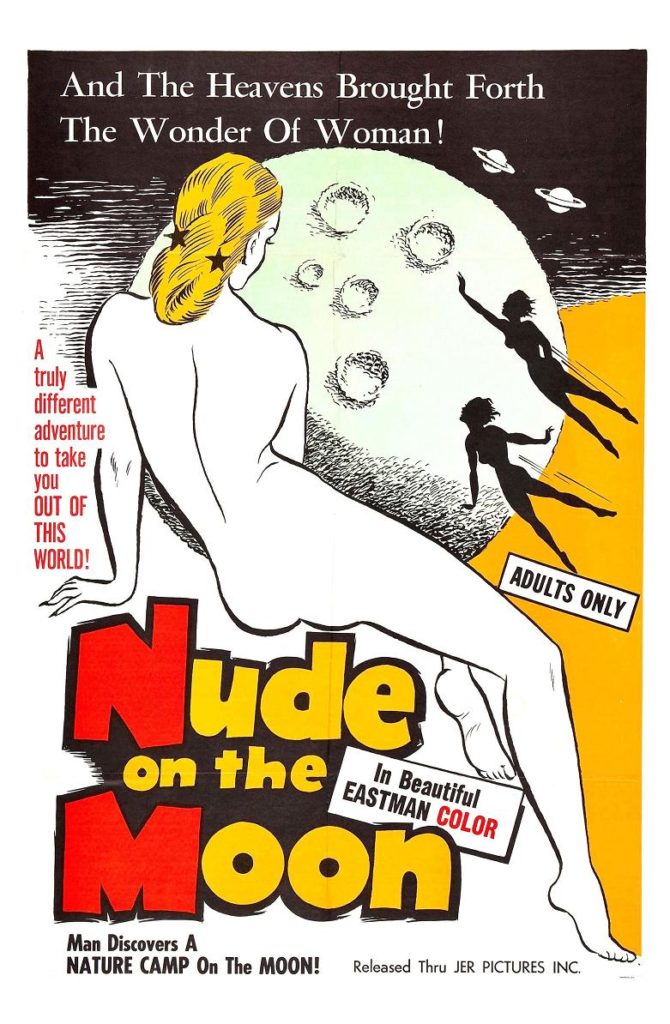
NUDE ON THE MOON (1961)
Wishman, in her early career, carved out her niche in the pre-dawn, innocent days of the “nudie-cutie.” The Supreme Court had ruled that films depicting nudist camps did not violate anti-nudity laws, as they were “educational,” which opened a new avenue to the exploitation hucksters (a lot of the same guys who were using similar loopholes to make “Hygiene” films in the decades previous) to cash in with quick n’ cheap nudist camp movies. During this time period (roughly 1958-1964), Wishman made eight “nudies,” most famously NUDE ON THE MOON.
Her third film, NUDE ON THE MOON shows a director not yet at the peak of her powers. The shots are static with an over-reliance on wide coverage angles — pretty much the antithesis of the shooting style Wishman would develop later. Thus, the film lacks a certain personality and would be hard to distinguish from any other sexploitation film from around the same time.
However, it was an admirable attempt to slip one past the censors. The plot follows Dr. Jeff Huntley (Lester Brown), a rocket scientist who funds a private moon venture with money willed to him by his dead uncle (who made his fortune in furs!). Once on the moon, Huntley and his fellow scientist come across a civilization of nude moon people, and uh, “observe” their culture. New York ultimately banned the film, as the New York State Censorship Board apparently didn’t feel documentation of nude moon beings possessed any “educational value.”
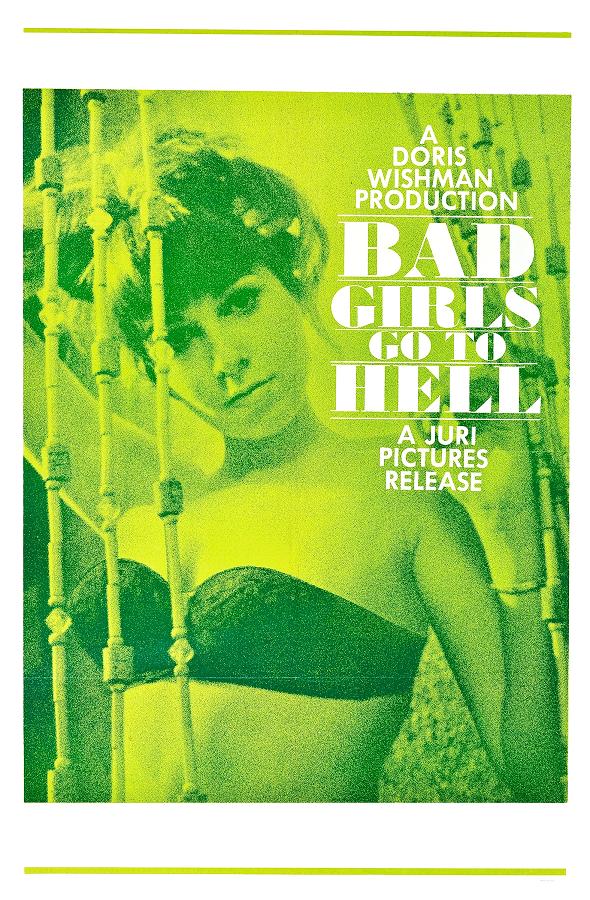
BAD GIRLS GO TO HELL (1965)
When the popularity of the “nudies” began to wane, the “roughie” cycle kicked into high gear after Russ Meyer’s LORNA in 1964. “Roughies” took the relatively innocent qualities of the “nudies” (there’s a reason why “cutie” was sometimes added to the term) and supplanted them with violence, often against women. Rape, kidnapping, and domestic abuse were the norm. If one were being in any way charitable, you could say one upside to the genre was that it also allowed for many noir-ish elements that were otherwise unheard of in sexploitation cinema.
The peculiar rise of the “roughie” was due to a confluence of factors: one being that in the mid-60s, exploitation films were beginning to push the envelop in terms of sex and violence, so it was naturally only a matter of time before the two were intertwined. You know, kind of like how the band Wire fused punk rock and minimalism. It was just destiny that the two shall meet.
Secondly—and it’s trite to even point out now — the mid to late ’60s were a time of great cultural revolution, especially in regard to women’s lib. The homely concept of the ’40s and ’50s housewife was being replaced with bra burning, free sex, and careerism. Therefore, the male anxiety toward such things found its way up on screen. Violence against women, as it was depicted in the “roughies,” demonstrated a sense of control men could have over women by forcefully taking back their dominance in the bedroom and workplace.
Wishman flourished during this period, directing almost a dozen “roughies.” But her work just seemed different than her contemporaries, like Michael Findlay (THE TOUCH OF HER FLESH), Hershell Gordon Lewis (SCUM OF THE EARTH!), and Russ Meyer (MOTORPSYCHO). She definitely delivered the goods, so to speak. Yet, there was a subversive and artistic streak, a creative thoroughfare through her oeuvre that functioned on a higher level than the typical grindhouse output. And there is perhaps no better example of this than BAD GIRLS GO TO HELL.
This is her first great film and where Doris Wishman becomes DORIS WISHMAN. The camera is flying all over the place. Angles are low and strange, as if eyeline match cuts can go fuck themselves. Lighting is strategically used against the black and white frames to create a brooding, nightmarish mood. And not least of all, we get what would turn into her trademark calling card: Wishman inserting shots of inanimate objects in place of sex scenes. For instance, in the beginning of the film, instead of showing the Gigi Darlene character and her husband have shower sex, there is a cutaway to a portrait of a cat hanging on the wall. (Let your mind go wherever that takes you…)
The title, too, is a bit of a bait and switch. BAD GIRLS GO TO HELL suggests a judgey tone that the film doesn’t have, particularly in contrast to its cinematic brethren. Gigi Darlene plays Meg, a bored, Boston housewife who kills her building’s janitor when he attempts to rape her. Fearing no one will believe her, Meg flees to New York City and embarks on a series of sexual misadventures, where’s she raped twice, has her first lesbian encounter, and somehow manages to find a job in between all that. Whereas most films of this sort (and the Canadian “maple syrup porns” that would follow a few years later) would treat Meg’s travails as punishment for her transgressions before happily returning her to her husband and sin-free marriage, Wishman’s film operates on somewhat of a paradoxical level — a kind of cinéma vérité in the abstract. The situations are heightened, but the world’s real.
In that sense, the movie plays more like an existential, French New Wave film than a run-of-the-mill 60s sexploitation endeavor. Wishman’s characters are loose, dangling pieces of thread cast about in a cold, indifferent universe, searching for elusive meaning and never finding any. Hell, the film (perhaps in a very unclever way) even muses on the idea of fate and pre-destination!
And indeed, as The Fates themselves weaved the destinies of all on the mortal plane, they just so happened to grace us a future and holy collaboration between Wishman and Polish stripper Liliana Wilczkowska, aka, Chesty Morgan…
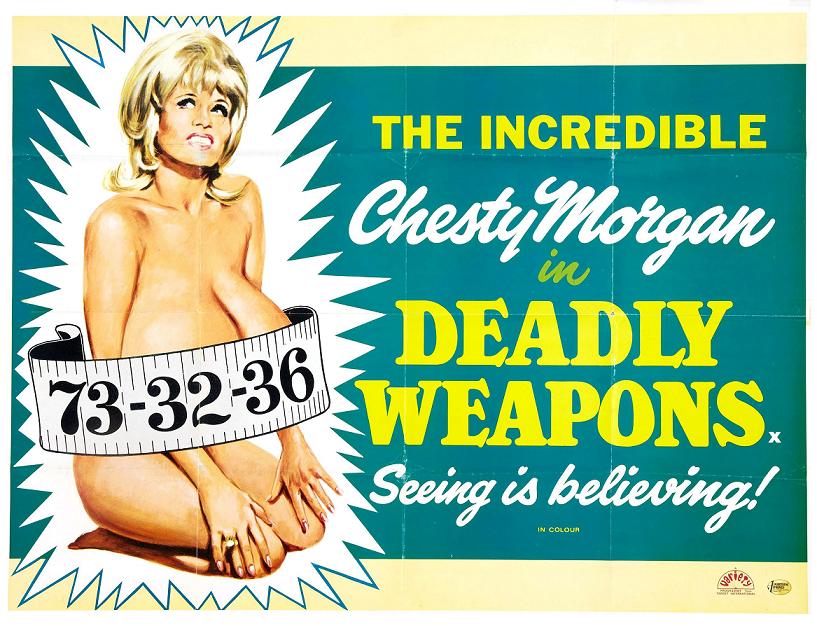
DEADLY WEAPONS (1974)
Chesty Morgan never led a happy life. Orphaned during the Nazi occupation of Warsaw, she ended up in Israel after the war. Morgan’s teenage years were just a constant reshuffling between orphanages, before finally at age 20, marrying Joseph Wilczkowski and moving to Brooklyn. There, tragedy struck again when Joseph was murdered during a robbery at his butcher shop. Desperate and in need of money, she reluctantly began stripping under the name Zsa Zsa. Word of mouth spread about her… uh, assets… so she changed her stage name to Chesty Morgan, and bookings to dance across the United States proliferated.
As for Wishman, she followed up her run of “roughies” with a softcore porno (LOVE TOY) and sex comedy (KEYHOLES ARE FOR PEEPING) in the early 70s. In a rut and cognizant of sexploitation’s slow, dying death due to the emergence of hardcore, she needed a muse —and Morgan badly needed a break. It was, thus, a happy convergence of fate that lasted for two years and two films.
The first being DEADLY WEAPONS.
This film and its immediate successor, DOUBLE AGENT 73 (the title a reference to the actress’s world-record bust size) are perhaps the best entry points into Wishman’s filmography. Because not only are they both immensely entertaining and the apotheosis of 70s sleaze, the two movies offer the complete Doris Wishman experience.
The camera zips around like a kindergartener on crack, creating a kinetic energy that bulldozes through much of the amateurishness on screen. Wishman, if nothing else, was a fantastic editor, and she keeps the pace unrelenting with an almost nonstop music soundtrack. There’s also a female gaze to the way she shoots Morgan. Yeah, we definitely get nonstop wide shots of her cans (for the men), but Wishman finds these weird, off-centered angles and glimpses of Morgan’s clothed cleavage — as if it’s from a woman’s jealous POV and almost to the point of being fetishistic.
And speaking of fetishism, DEADLY WEAPONS also delves into Wishman’s constant fascination with the relationship between sex and sado-masochism/violence. For example, there’s a sequence late in the film when Harry Reemes (of DEEP THROAT fame) strangles his girlfriend. All juiced up on murder, he immediately knocks on Chesty Morgan’s hotel room door and expends that sexual energy on her. This works for her, since she’s there to kill him (to avenge her husband’s death), which she does — by suffocating him with her breasts, an act she appears to get sexual gratification from. Therefore, no matter how hard we try to separate sex and violence through cultural norms, there exists an irrepressible transference of violent energy through sex and vice versa.
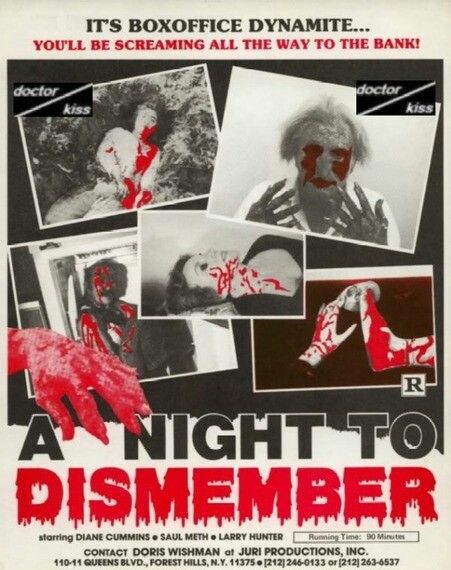
A NIGHT TO DISMEMBER (1983)
I imagine it was these kinds of interests and proclivities that kept Wishman at arm’s length with hardcore pornography after the decline of sexploitation. She did eventually end up directing two hardcores in the mid-’70s (SATAN WAS A LADY and COME WITH ME, MY LOVE), though she was never really comfortable with it. But as the decade closed out, the exploitation scene turned to horror after the success of HALLOWEEN (1978), which gave Wishman another chance to switch gears. Unfortunately, the result, A NIGHT TO DISMEMBER, would prove to be her last hurrah (for a while) after a disastrous shoot and crazily inept/what-the-fuck final product.
It’s difficult to picture what could’ve/should’ve been with A NIGHT TO DISMEMBER if Wishman didn’t lose half of her shot footage in a Movielab accident. She said about it: “I had about sixty percent of the original film, and the rest were outtakes. It was very difficult to concoct another story that made any sense.” However, after seeing the Original Cut that made its way into the world in 2018, it’s fairly obvious that this was never going to be a good or successful film.
That being sad, it is a criminally underappreciated midnight (should be) classic. I could tell you the plot, but it’s impenetrable to the human mind (if you need a metaphor, think Nerf dart hitting a Terminator’s skull). A NIGHT TO DISMEMBER is like one of those shorts from NIGHT TRAIN TO TERROR, but for 80 minutes. It’s BLOOD BEAT‘s incestuous cousin by way of DISCONNECTED‘s uncle.
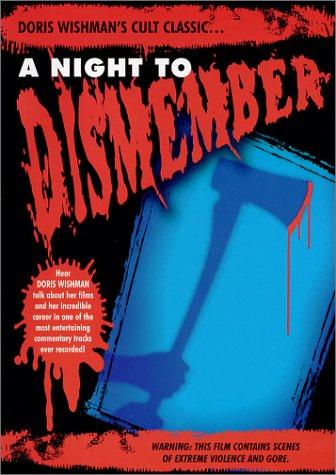
The film is trying to ride the coattails of the slasher craze, but it’s more CARRIE than anything. Honestly, the way it’s pieced together, think Brian De Palma ‘acid dream.’ There’s an arthouse quality to the entire affair that would lend one to think that perhaps this is one of those films Americans don’t quite get but the French people love. Plus, adding to the surreal quality is the fact that it even has a horror host, as if the people making the film’s only experience with horror was from the E.C. Comics of the 1950s.
Yet, most notable to me is just how much A NIGHT TO DISMEMBER still feels like a Doris Wishman film. Regardless of the film negative snafu at Movielab, Wishman shoots everything here just like she did in the ’60s and ’70s. Hence, even if production was smooth sailing, early ’80s audiences would’ve been truly baffled at what they were watching.
The ugly circumstances behind the making of the film forced Wishman into retirement until 2002, when (at age 90!) she returned to sexploitation with DILDO HEAVEN. She died later that year, but not before cranking out another one (EACH TIME I KILL), a true testament to her artistic spirit — that drive in all great artists, which is a compulsion to create no matter what, no matter how, no matter when. Indeed, maybe then Doris Wishman wasn’t a part of history after all. Because she existed outside of it.
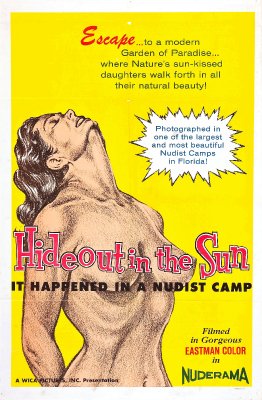
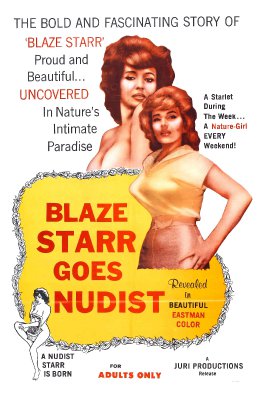

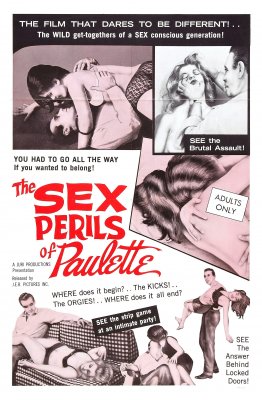
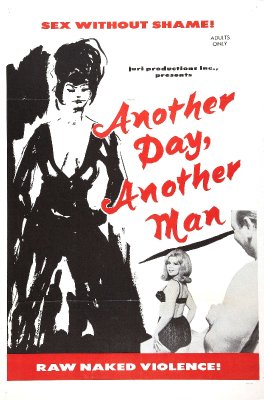


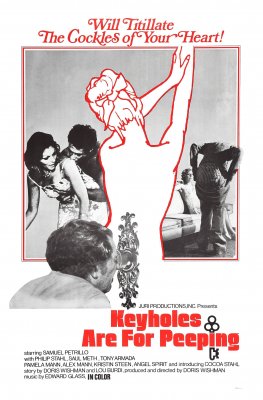
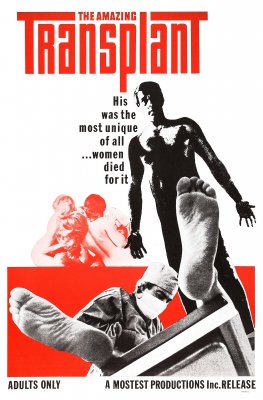
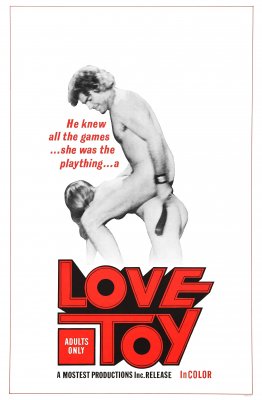
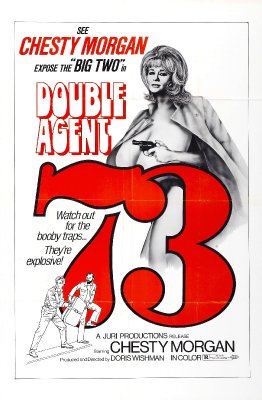
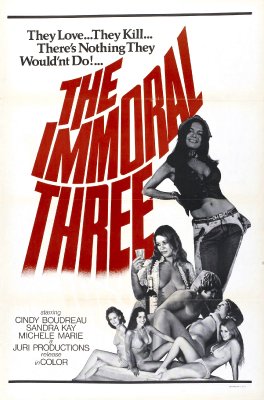

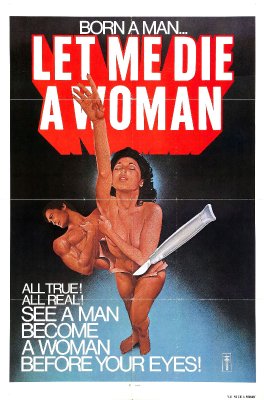
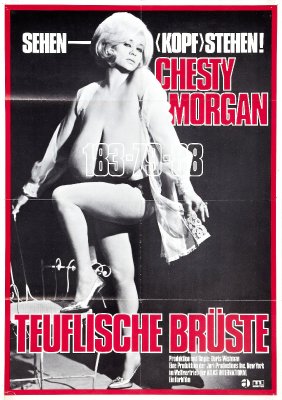
Tags: Doris Wishman, The 1960s, The 1970s, The 1980s


No Comments